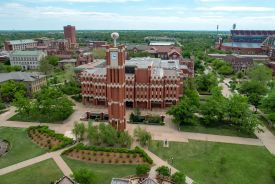Nepal Earthquake: NASA's Finder Device Helps Locate 4 Men Buried Alive Under Debris
ByLast month's earthquake in Nepal claimed thousands of lives, but a piece of NASA technology saved the lives of four.
Speaking with the Los Angeles Times, the Finding Individuals for Disaster and Emergency Response's (Finder) task manager, James Lux said the device was able to locate four people trapped in two different locations.
"I'm very gratified that it did its job -- it's the first time that Finder's ever been used in an actual disaster situation," Lux, of NASA's Jet Propulsion Laboratory (JPL), told the Times. "You've done the best you can, you put it out there, and it worked."
Finder is no bigger or heavier than a suitcase and works by using radar technology to detect the slightest, most subtle motions and sounds only a living human can make, conscious or not. Finder was able to see the victims beneath as much as 10 feet of debris, which was made of all sorts of material.
"It looks for the reflections coming back," Lux said. "The rubble reflections don't move, but the reflections from the people who are alive inside do.
"For instance, if you're looking from the top of your head, most of what you're seeing is the pulse flowing from the blood vessels right under your skin, and it makes your skin move."
Finder is a collaboration between the JPL and the U.S. Department of Homeland Security (DHS) and was liscenced to an Edgewood, Md. company called R4 Inc. After the earthquake struck April 25, the company's president David Lewis went to Nepal with two prototype devices, the Times reported.
"The true test of any technology is how well it works in a real-life operational setting," Reginald Brothers, DHS undersecretary for science and technology, said in a statement. "Of course, no one wants disasters to occur, but tools like this are designed to help when our worst nightmares do happen. I am proud that we were able to provide the tools to help rescue these four men."
© 2025 University Herald, All rights reserved. Do not reproduce without permission.








